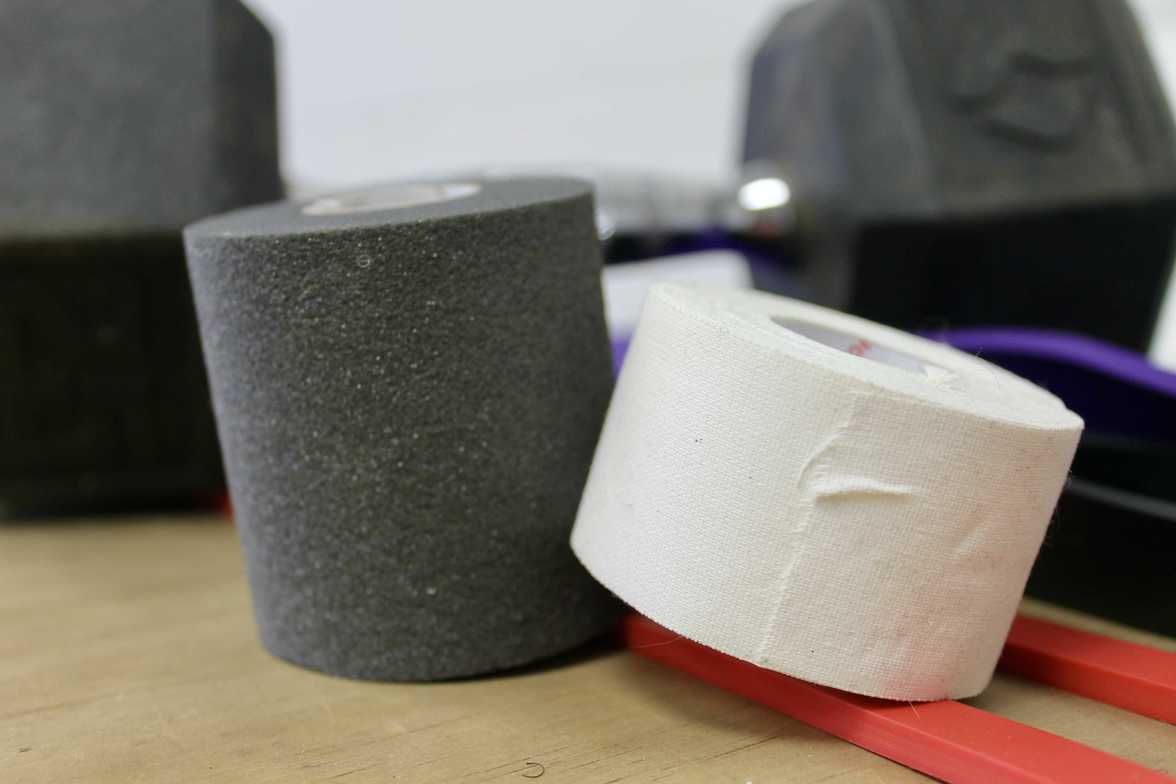
Athletic taping stands as a tried-and-true method in the sports world, aimed at bolstering joint and muscle stability. As athletes continue to embrace its benefits, it becomes crucial to explore both the positives and negatives surrounding this practice. In this blog post, we'll take a closer look at the advantages and drawbacks of athletic taping, including a critical consideration—its diminishing effectiveness after approximately 20 minutes.
Pros:
-
Joint Stability: Athletic taping is renowned for providing immediate joint stability. It is commonly used to support vulnerable areas, such as ankles and wrists, reducing the risk of injuries like sprains or strains during physical activity.
-
Injury Prevention: By limiting the range of motion in specific joints, athletic taping can help prevent injuries. This is particularly beneficial for athletes recovering from previous injuries or those with chronic joint instability.
-
Pain Reduction: Taping can assist in alleviating pain associated with certain injuries or conditions. It helps by reducing excessive movement and pressure on injured tissues, promoting a more comfortable and controlled range of motion.
-
Enhanced Proprioception: Athletic taping enhances proprioception, the body's awareness of its position in space. This heightened awareness can improve overall coordination and control, particularly in athletes involved in sports that demand precise movements.
Cons:
-
Skin Irritation: One of the primary drawbacks of athletic taping is the potential for skin irritation. Adhesive materials in the tape may cause allergic reactions or irritate the skin, especially with prolonged use.
-
Dependency: Some athletes may become overly reliant on taping for joint support. This dependency can lead to weakened muscles and joints over time, as the body becomes less adept at providing its natural support.
-
Limited Evidence for Effectiveness: Despite its widespread use, the scientific evidence supporting the effectiveness of athletic taping is not entirely conclusive. While it may provide short-term benefits, its long-term impact on performance and injury prevention is still debated among experts.
-
Restriction of Movement: While intended to stabilize joints, athletic taping can also limit natural joint movement. In sports that require a full range of motion, such as gymnastics or swimming, excessive taping may hinder performance rather than enhance it.
-
Diminished Effectiveness Over Time: Perhaps one of the most critical considerations is that athletic taping tends to lose its effectiveness after about 20 minutes. The adhesive properties weaken, and the support provided may diminish, making it crucial for athletes to reevaluate the necessity of reapplication during extended activities.
Conclusion:
In contemplating the pros and cons of athletic taping, it is essential to recognize its time-sensitive nature and potential drawbacks. While it can offer immediate benefits, athletes should remain mindful of its diminishing effectiveness over time. Consulting with healthcare professionals and considering individual needs and the nature of the sport can help strike a balance, ensuring that athletic taping is employed judiciously and effectively.
Works Cited:
Zwiers, R., Vuurberg, G., Blankevoort, L., Kerkhoffs, G. M. M. J., & [Author], T. (2016). Taping and bracing in the prevention of ankle sprains: current concepts. Journal of ISAKOS, 1(6), 304-310.

.jpeg)



